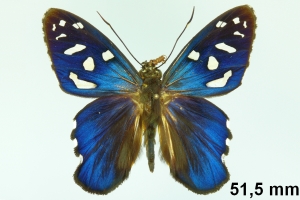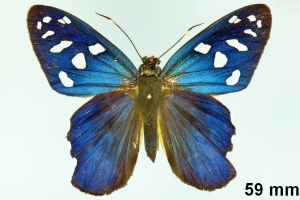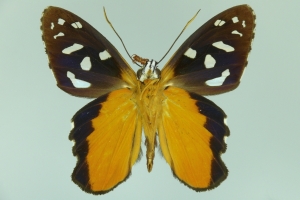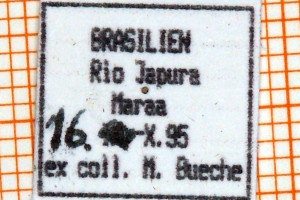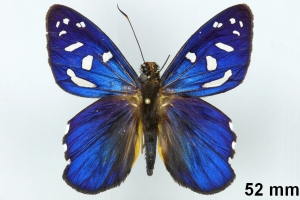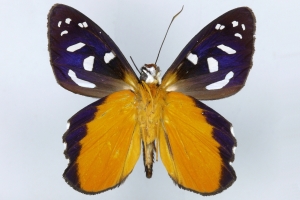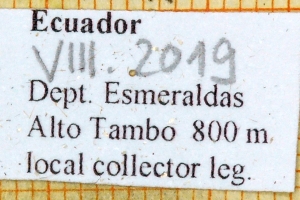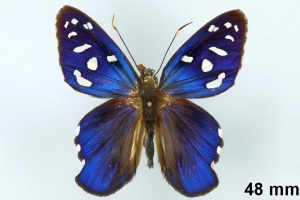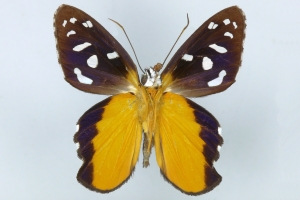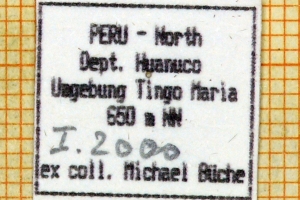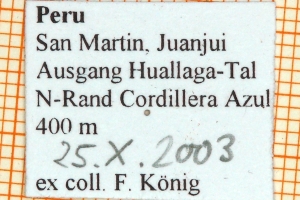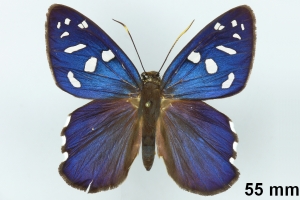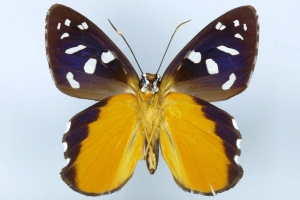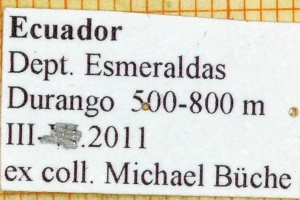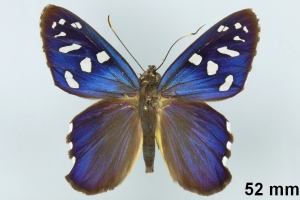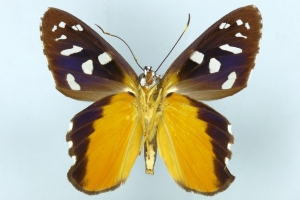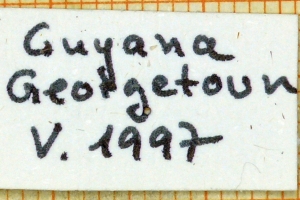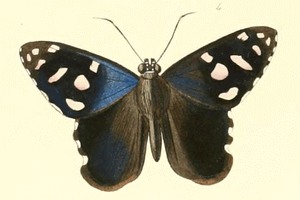Version 5 / 7 vom 25. Juni 2025 um 8:01:45 von Jürgen Rodeland
Länder:

 +7Kontinente:MASA
+7Kontinente:MASA


 +7Kontinente:MASA
+7Kontinente:MASAInhalt
2. Diagnose
2.1. Männchen
1-3: ♂, Daten siehe Etiketten (coll., det. & fot.: Ernst Brockmann, Fotos bearbeitet: Michel Kettner)
4-6: ♂, Daten siehe Etiketten (coll., det. & fot.: Ernst Brockmann, Fotos bearbeitet: Michel Kettner)
7-9: ♂, Daten siehe Etiketten (coll., det. & fot.: Ernst Brockmann, Fotos bearbeitet: Michel Kettner)
2.2. Weibchen
1-3: ♀, Daten siehe Etiketten (coll., det. & fot.: Ernst Brockmann, Fotos bearbeitet: Michel Kettner)
4-6: ♀, Daten siehe Etiketten (coll., det. & fot.: Ernst Brockmann, Fotos bearbeitet: Michel Kettner)
7-9: ♀, Daten siehe Etiketten (coll., det. & fot.: Ernst Brockmann, Fotos bearbeitet: Michel Kettner)
2.3. Erstbeschreibung
3. Weitere Informationen
3.1. Faunistik
Nach [Global Biodiversity Information Facility] kommt die Art in Brasilien, Costa Rica, Kolumbien, Ecuador, Französisch-Guayana, Peru und Guyana vor.
Locus typicus: Pará [Brasilien].
(Autor: Michel Kettner)
3.2. Literatur
- Erstbeschreibung: Doubleday, E. & J. O. Westwood (1850-1852): The Genera of Diurnal Lepidoptera: Comprising their Generic Characters, a Notice of their Habits and Transformations, and a Catalogue of the Species of each Genus 2: 251-534, pl. XXXI-LXXX + Supplementary Plate. London (Longman, Brown, Green, and Longmans). — Digitalisat auf biodiversitylibrary.org: [516], [pl. LXXVIII fig. 4]








